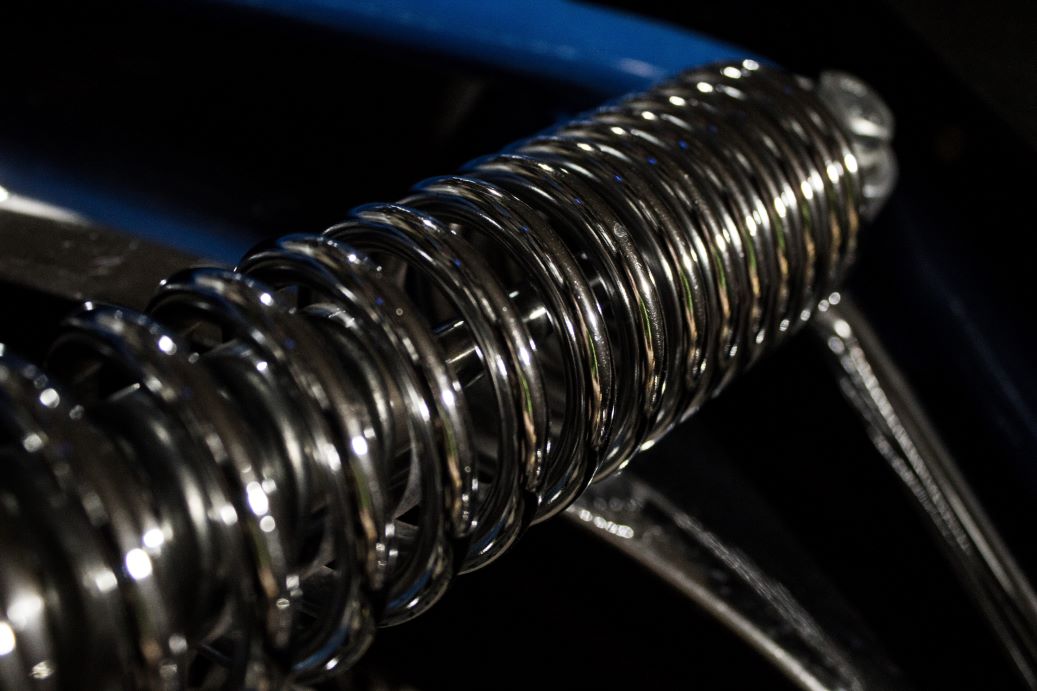How to increase spring tension and how to measure spring tension are important design considerations in the manufacture of custom springs. Spring tension allows engineers to design and select springs that meet specific performance requirements for a given application, and also enhance the functionality and reliability of a mechanical system. To further understand, let’s take a look at the basics of spring tension, and certain factors that can influence the performance of different types of springs.
The Science Behind Spring Tension: Exploring the Basics
 Spring tension refers to the load or force exerted by a spring when it undergoes deformation or displacement while being stretched or compressed. It is a key parameter in Hooke’s Law of Elasticity, which describes the relationship between the force applied to a spring and the resulting deformation or displacement of that spring. This is differentiated from a spring’s initial tension, defined as the force that keeps the coils at rest while the spring is in a set position. Initial tension is measured by the load or force required to overcome the internal force to initiate coil separation.
Spring tension refers to the load or force exerted by a spring when it undergoes deformation or displacement while being stretched or compressed. It is a key parameter in Hooke’s Law of Elasticity, which describes the relationship between the force applied to a spring and the resulting deformation or displacement of that spring. This is differentiated from a spring’s initial tension, defined as the force that keeps the coils at rest while the spring is in a set position. Initial tension is measured by the load or force required to overcome the internal force to initiate coil separation.
Measuring spring tension helps determine how effectively a spring will function in a particular application, how much potential energy is stored in the spring, and how much force is required to deform it. In sum, this tension contributes to the overall force exerted by the spring when it is compressed or extended.
Factors Influencing Spring Tension and Their Impact on Performance
Spring tension is influenced by a number of factors that can impact a spring’s performance. One important factor is determining the spring constant, a measure of the stiffness or rigidity of a spring. It is a fundamental property that characterizes how much force is required to deform a spring by a certain amount.
The strength and tension of a spring, and its performance, can be optimized for specific application requirements by altering or modifying the spring constant. This would affect the dimensions such as wire diameter, coil diameter, number of coils, or coil pitch. By altering the dimensions of the spring constant, engineers can refine the characteristics of the spring to meet desired specifications to impact its performance.
Another factor that can affect performance and influence spring tension is by applying a pre-load or pre-stress to a spring by compressing or extending it before use. Pre-stressing improves fatigue resistance, enabling springs to better handle loads and withstand stress, while improving the overall performance and durability of springs. It is commonly used to achieve certain desired characteristics or to eliminate any initial slack in the spring, which can influence tension behavior.
Applying protective coatings, treatments or electroplating the surface of spring material to enhance its strength and resistance to corrosion or wear is another strategy that can impact performance. Coatings offer not just an extra layer of protection, but improve the durability, reliability and service life of springs to ensure optimal productivity.
Different Types of Springs and How Tension Varies Across Varieties
There are many varieties and types of springs that serve different functions in countless applications. That said, of the many spring designs, three—the compression spring, extension spring, and torsion spring—are far and away the most commonly manufactured springs that serve the majority of industrial applications.
As the name implies, compression springs store their energy by resisting a compressive force when a load is applied to the coil. When the force is removed, the coils release the stored energy and the spring returns to its original shape. The load or force exerted by a compression spring is linear in proportion to its displacement. When a compression spring is compressed or extended, its force increases or decreases linearly.
Extension springs have a spiral coil shape similar to compression springs but are wound in the opposite direction. There are no spaces between the coils of an extension spring–it releases its mechanical energy by resisting a pulling force when applied. Unlike compression springs, the force required in tension springs does not increase linearly with displacement. The relationship between force and displacement in extension springs is not directly proportional.
Torsion springs derive their mechanical energy through twisting or torque forces when wound, exerting a rotational force when twisted from their equilibrium position. Though these springs have a spiral shape similar to compression and extension springs, they store and release rotational energy. The load or force exerted by a torsion spring is dependent on the amount of torque applied.
James Spring & Wire Company is a leading manufacturer of custom springs, wire and strip forms and precision metal stampings. We are dedicated to providing superior customer service and delivering high-quality springs manufactured to the exact specifications of our clients. For more information about our custom spring manufacturing services, contact us today.

